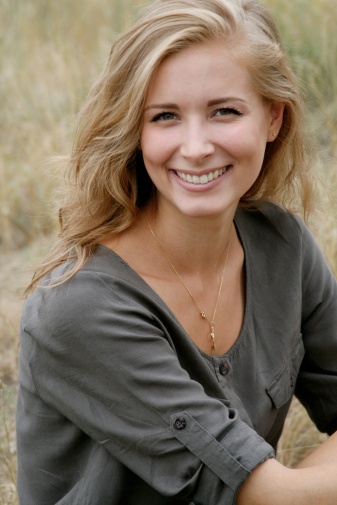| Module Name | humanseg_server |
|---|---|
| Category | Image segmentation |
| Network | hrnet |
| Dataset | Baidu self-built dataset |
| Fine-tuning supported or not | No |
| Module Size | 159MB |
| Data indicators | - |
| Latest update date | 2021-02-26 |
-
-
HumanSeg-server model is trained by Baidu self-built dataset, which can be used for portrait segmentation.
-
For more information, please refer to:humanseg_server
-
-
-
paddlepaddle >= 2.0.0
-
paddlehub >= 2.0.0
-
-
-
$ hub install humanseg_server
-
In case of any problems during installation, please refer to:Windows_Quickstart | Linux_Quickstart | Mac_Quickstart
-
-
-
hub run humanseg_server --input_path "/PATH/TO/IMAGE" - If you want to call the Hub module through the command line, please refer to: PaddleHub Command Line Instruction
-
-
-
Image segmentation and video segmentation example:
import cv2 import paddlehub as hub human_seg = hub.Module(name='humanseg_server') im = cv2.imread('/PATH/TO/IMAGE') res = human_seg.segment(images=[im],visualization=True) print(res[0]['data']) human_seg.video_segment('/PATH/TO/VIDEO')
-
Video prediction example:
import cv2 import numpy as np import paddlehub as hub human_seg = hub.Module('humanseg_server') cap_video = cv2.VideoCapture('\PATH\TO\VIDEO') fps = cap_video.get(cv2.CAP_PROP_FPS) save_path = 'humanseg_server_video.avi' width = int(cap_video.get(cv2.CAP_PROP_FRAME_WIDTH)) height = int(cap_video.get(cv2.CAP_PROP_FRAME_HEIGHT)) cap_out = cv2.VideoWriter(save_path, cv2.VideoWriter_fourcc('M', 'J', 'P', 'G'), fps, (width, height)) prev_gray = None prev_cfd = None while cap_video.isOpened(): ret, frame_org = cap_video.read() if ret: [img_matting, prev_gray, prev_cfd] = human_seg.video_stream_segment(frame_org=frame_org, frame_id=cap_video.get(1), prev_gray=prev_gray, prev_cfd=prev_cfd) img_matting = np.repeat(img_matting[:, :, np.newaxis], 3, axis=2) bg_im = np.ones_like(img_matting) * 255 comb = (img_matting * frame_org + (1 - img_matting) * bg_im).astype(np.uint8) cap_out.write(comb) else: break cap_video.release() cap_out.release()
-
-
def segment(images=None, paths=None, batch_size=1, use_gpu=False, visualization=False, output_dir='humanseg_server_output')
-
Prediction API, generating segmentation result.
-
Parameter
- images (list[numpy.ndarray]): Image data, ndarray.shape is in the format [H, W, C], BGR.
- paths (list[str]): Image path.
- batch_size (int): Batch size.
- use_gpu (bool): Use GPU or not. set the CUDA_VISIBLE_DEVICES environment variable first if you are using GPU
- visualization (bool): Whether to save the results as picture files.
- output_dir (str): Save path of images, humanseg_server_output by default.
-
Return
- res (list[dict]): The list of recognition results, where each element is dict and each field is:
- save_path (str, optional): Save path of the result.
- data (numpy.ndarray): The result of portrait segmentation.
- res (list[dict]): The list of recognition results, where each element is dict and each field is:
def video_stream_segment(self, frame_org, frame_id, prev_gray, prev_cfd, use_gpu=False):
-
Prediction API, used to segment video portraits frame by frame.
-
Parameter
- frame_org (numpy.ndarray): Single frame for prediction,ndarray.shape is in the format [H, W, C], BGR.
- frame_id (int): The number of the current frame.
- prev_gray (numpy.ndarray): Grayscale image of the previous network input.
- prev_cfd (numpy.ndarray): The fusion image from optical flow and the prediction result from previous frame.
- use_gpu (bool): Use GPU or not. set the CUDA_VISIBLE_DEVICES environment variable first if you are using GPU
-
Return
- img_matting (numpy.ndarray): The result of portrait segmentation.
- cur_gray (numpy.ndarray): Grayscale image of the current network input.
- optflow_map (numpy.ndarray): The fusion image from optical flow and the prediction result from current frame.
def video_segment(self, video_path=None, use_gpu=False, save_dir='humanseg_server_video_result'):
-
Prediction API to produce video segmentation result.
-
Parameter
- video_path (str): Video path for segmentation。If None, the video will be obtained from the local camera, and a window will display the online segmentation result.
- use_gpu (bool): Use GPU or not. set the CUDA_VISIBLE_DEVICES environment variable first if you are using GPU
- save_dir (str): Save path of video.
def save_inference_model(dirname)
-
Save the model to the specified path.
-
Parameters
- dirname: Model save path.
-
-
PaddleHub Serving can deploy an online service of for human segmentation.
-
-
Run the startup command:
-
$ hub serving start -m humanseg_server
-
-
The servitization API is now deployed and the default port number is 8866.
-
NOTE: If GPU is used for prediction, set CUDA_VISIBLE_DEVICES environment variable before the service, otherwise it need not be set.
-
-
-
With a configured server, use the following lines of code to send the prediction request and obtain the result
-
import requests import json import base64 import cv2 import numpy as np def cv2_to_base64(image): data = cv2.imencode('.jpg', image)[1] return base64.b64encode(data.tostring()).decode('utf8') def base64_to_cv2(b64str): data = base64.b64decode(b64str.encode('utf8')) data = np.fromstring(data, np.uint8) data = cv2.imdecode(data, cv2.IMREAD_COLOR) return data # Send an HTTP request org_im = cv2.imread('/PATH/TO/IMAGE') data = {'images':[cv2_to_base64(org_im)]} headers = {"Content-type": "application/json"} url = "http://127.0.0.1:8866/predict/humanseg_server" r = requests.post(url=url, headers=headers, data=json.dumps(data)) mask =cv2.cvtColor(base64_to_cv2(r.json()["results"][0]['data']), cv2.COLOR_BGR2GRAY) rgba = np.concatenate((org_im, np.expand_dims(mask, axis=2)), axis=2) cv2.imwrite("segment_human_server.png", rgba)
-
-
Starting with PaddleHub 2.3.1, the Gradio APP for humanseg_server is supported to be accessed in the browser using the link http://127.0.0.1:8866/gradio/humanseg_server.
-
1.0.0
First release
-
1.1.0
Added video portrait segmentation interface
Added video stream portrait segmentation interface
-
1.1.1
Fix memory leakage problem of on cudnn 8.0.4
-
1.3.0
Remove Fluid API
-
1.4.0
Add Gradio APP support.
$ hub install humanseg_server == 1.4.0

